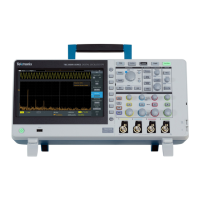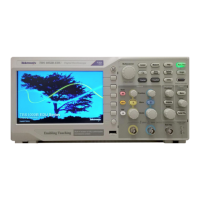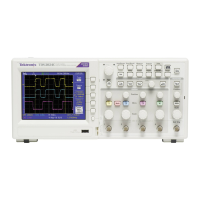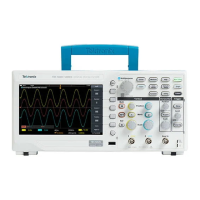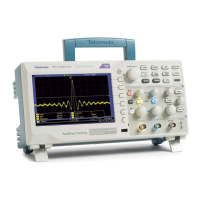Event Queue
The Event Queue stores detailed information on up to 20 events. If than 20 events
stack up in the Event Queue, the 20th event is replaced by event code 350,
"Queue Overflow."
Read the Event Queue with the EVENT? query (which returns only the event
number), with the EVMSG? query (which returns the event number and a text
description of the event), or with the ALLEV? query (which returns all the event
numbers with a description of the event). Reading an event removes it from the
queue.
Before reading an event from the Event Queue, you must use the *ESR? query to
read the summary of the event from the SESR. This makes the events
summarized by the *ESR? read available to the EVENT? and EVMSG? queries,
and empties the SESR.
Reading the SESR erases any events that were summarized by previous *ESR?
reads but not read from the Event Queue. Events that follow an *ESR? read are
put in the Event Queue but are not available until *ESR? is used again.
Event Handling Sequence
The following figure shows how to use the status and event handling system. In
the explanation that follows, numbers in parentheses refer to numbers in the
figure.
Status and Events
280 TBS2000 Series Programmer
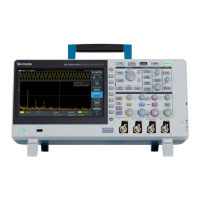
